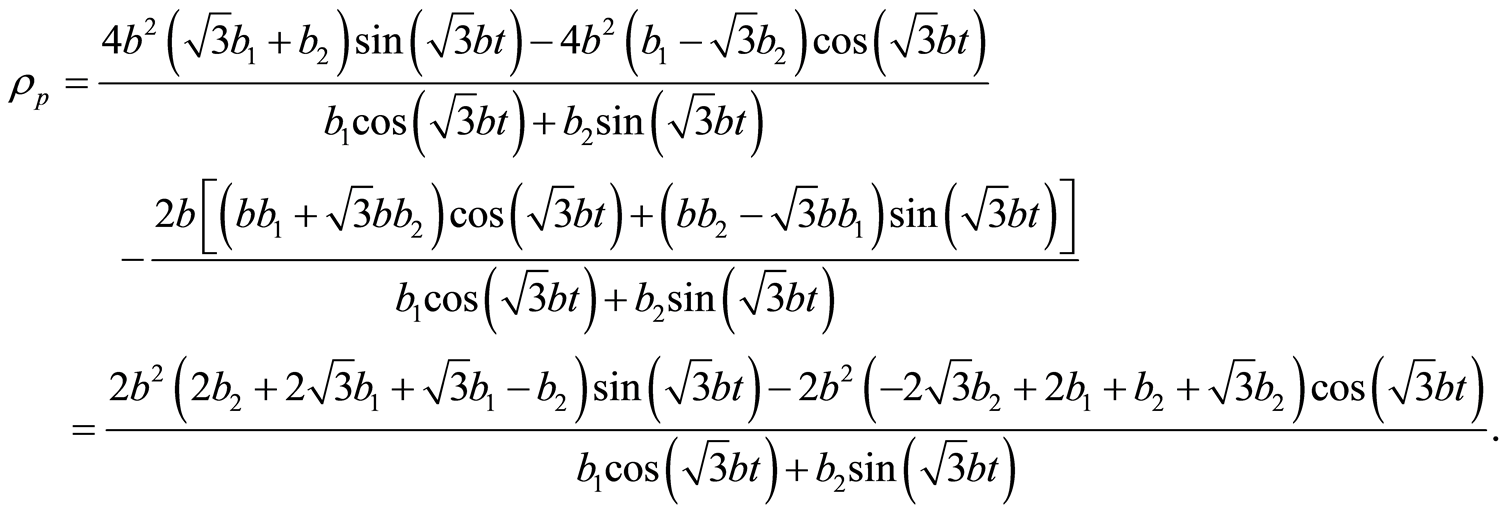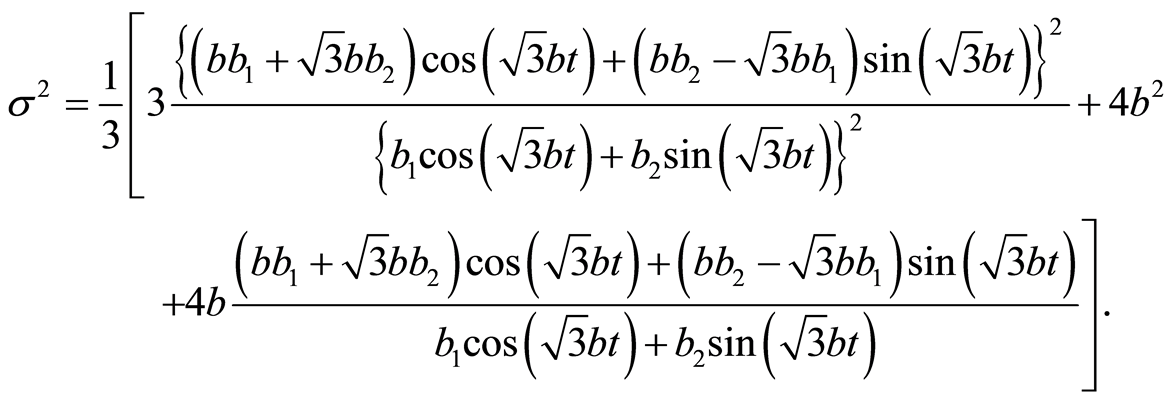On Bianchi Type III String Cloud Universe Containing Strange Quark Matter ()
1. Introduction
Several aspects of strange quark matter have been investigated by many researchers. This work is a continuation of [1] . The origin of our Universe is one of the greatest cosmological mysteries even today. The exact physical situation at early stage of the formation of our Universe is still a subject of study. The concept of string theory was developed to describe events of the early stage of the evolution of the Universe. The general relativistic treatment of strings was initiated by [2] and [3] . The gravitational effects of cosmic strings have been extensively discussed by [4] [5] in general relativity. Relativistic string models in the context of Bianchi space time have been obtained by [6] -[9] .
Here we suppose that strange quark matters are attached to the string cloud. It is plausible to attach strange quark matter to the string cloud, because, one of such transitions during the phase transitions of the universe could be Quark Glucon Plasma (QGP) hadron gas (called quark-hadron phase transition) when cosmic temperature was . [10] -[12] have formed two ways for creation of strange quark matter. One is the quark-hadron phase transition in the early Universe and another in the conversion of neutron stars into strange ones at ultrahigh density. In strong interaction theories it is supposed that breaking of physical vacuum takes place inside hadrons to form quark bag model.
. [10] -[12] have formed two ways for creation of strange quark matter. One is the quark-hadron phase transition in the early Universe and another in the conversion of neutron stars into strange ones at ultrahigh density. In strong interaction theories it is supposed that breaking of physical vacuum takes place inside hadrons to form quark bag model.
As a result vacuum energy densities inside and outside a hadron become essentially different, and the vacuum pressure on the bag wall equilibrates the pressure of quarks, thus stabilizing the system. [13] [14] examined that if the hypothesis of the quark matter is true, then some of neutron stars could actually be strange stars built entirely of strange matter. [15] studied models of strange quark matter attached to the string cloud in the spherical symmetric space-time admitting conformal motion discussing strange star properties. Also [16] -[18] studied 5-D Kaluza-Klein cosmological models with quark matter attached to the string cloud and domain walls.
The strange quark matter is modelled with an equation of state based on the phenomenological bag model of quark matter, in which quark confinement is described by an energy term proportional to the volume. In this model, quarks are through as degenerate Fermi gas, which exists only in a region of space endowed with a vacuum energy density  (called as the bag constant). In the framework of this model, the quark matter is composed of massless u and d quarks, massive s quarks and electrons. [19] discussed charged strange quark matter in the spherically symmetric space-time admitting conformal motion. [20] has discussed string cloud and domain walls with quark matter in n-dimensional Kaluza-Klien cosmological model in general relativity and strange quark matter attached to string cloud in Bianchi type-III space time in general relativity. [21] has confirmed their work with quark matter which is attached to the topological defects in general relativity. [22] has obtained cosmological model with strange quark matter attached to cosmic strings for axially symmetric space-time in general relativity. Recently, [23] has discussed geometry of quark and strange quark matter in higher dimensional general relativity. [24] has discussed about higher dimensional cosmological model with quark and strange quark matter. [25] discussed Bianchi Type II, VIII and IX cosmological models with strange quark matter attached to string cloud in B-D and general theory of gravitation.
(called as the bag constant). In the framework of this model, the quark matter is composed of massless u and d quarks, massive s quarks and electrons. [19] discussed charged strange quark matter in the spherically symmetric space-time admitting conformal motion. [20] has discussed string cloud and domain walls with quark matter in n-dimensional Kaluza-Klien cosmological model in general relativity and strange quark matter attached to string cloud in Bianchi type-III space time in general relativity. [21] has confirmed their work with quark matter which is attached to the topological defects in general relativity. [22] has obtained cosmological model with strange quark matter attached to cosmic strings for axially symmetric space-time in general relativity. Recently, [23] has discussed geometry of quark and strange quark matter in higher dimensional general relativity. [24] has discussed about higher dimensional cosmological model with quark and strange quark matter. [25] discussed Bianchi Type II, VIII and IX cosmological models with strange quark matter attached to string cloud in B-D and general theory of gravitation.
Here we study the model universe containing strange quark matter which is expanding, anisotropic, with a sign of dark energy that help in accelerated expansion of this universe. It is also seen that the model universe which we discuss contains both particles and strings, but ultimately will have fluid containing particles only. The model which we consider here is acceptable in view of the present observations of the Universe. The physical interpretations of the solutions obtained are also discussed.
2. Field Equations and Their Solutions
We consider the line element of Bianchi type III universe
 (1)
(1)
where the metric potentials ,
,  , and
, and  are the functions of time “
are the functions of time “ ” alone and “
” alone and “ ” is non-zero constant. For string cloud the energy momentum is given by
” is non-zero constant. For string cloud the energy momentum is given by
 (2)
(2)
where  is the rest energy density for the cloud of strings with particle attached to them,
is the rest energy density for the cloud of strings with particle attached to them,  is the particle energy density and
is the particle energy density and  is the string tension density such that
is the string tension density such that
 (3)
(3)
We assume quarks are massless and non-interacting as in Bag model.
So, quark pressure is
 (4)
(4)
where  is quark energy density.
is quark energy density.
Total energy density is
 (5)
(5)
and total pressure is
 (6)
(6)
For this universe containing strange quark matter we will consider quarks instead of particles in the string cloud, so we consider the energy density of quark matter instead of the energy density of the particles in the string cloud.
From Equations (3) and (5), we obtain
 (7)
(7)
Here field equations are
 (8)
(8)
 (9)
(9)
 (10)
(10)
 (11)
(11)
 (12)
(12)
Here we get as solutions
 (13)
(13)
 (14)
(14)
 (15)
(15)
where  are arbitrary constants.
are arbitrary constants.
Therefore here,
 (16)
(16)
 (17)
(17)
 (18)
(18)
 (19)
(19)
And
 (20)
(20)
From above here,
 (21)
(21)
 (22)
(22)
 (23)
(23)
 (24)
(24)
Quark energy density
 (25)
(25)
where  is the bag constant.
is the bag constant.
 (26)
(26)
Here
 (27)
(27)
 (28)
(28)
 (29)
(29)
 (30)
(30)
Anisotropy parameter of the expansion
 (31)
(31)
 (32)
(32)
3. Physical Interpretations of the Solutions
In this model, from the values of deceleration parameter  and expansion factor
and expansion factor  we see that our model Universe is expanding at an accelerated rate. And since, here
we see that our model Universe is expanding at an accelerated rate. And since, here , our model is found to be an anisotropic one. The volume of this model Universe is found to increase rapidly with time, thus giving testimony to the accelerated expansion of this model. This model Universe is also found to be a shearing one.
, our model is found to be an anisotropic one. The volume of this model Universe is found to increase rapidly with time, thus giving testimony to the accelerated expansion of this model. This model Universe is also found to be a shearing one.
The pressure of our model Universe is also found to be negative which is a characteristic of this model Universe to be a dark energy model and which helps in the accelerated expansion of the Universe. A negative pressure here stimulates a repulsive gravity and inflates the Universe by overwhelming the usual gravitational effects of matter, thereby playing an important role in getting an accelerated expansion of the Universe.
In this model Universe the quark energy density as well as the quark pressure is found to be increasing functions of time. Here the string density is found to be a decreasing function of time whereas the particle density is found to be an increasing function of time showing that this model Universe will contain both particles and strings but ultimately will be a fluid containing particle only. The pressure and energy density of the fluid are seen to be negligible at late time, and this is acceptable in view of the present observations of the Universe.
It can be seen that even though the fluid in this model Universe produces an anisotropic parameter, its anisotropy does not promote anisotropy in the expansion. Rather, since anisotropic of fluid isotropises at late times of the Universe in accelerating models, our Universe will approach to isotropy as it is an accelerating model.